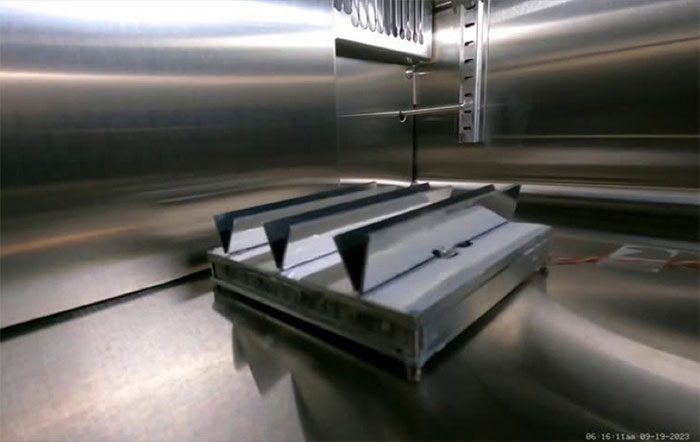The tile roof system developed by the University of California, Santa Barbara, includes a series of shutters that use wax motors to open and close based on temperature, aiding in energy conservation.
Mechanical engineering professors at the University of California, Santa Barbara have developed a flexible adaptive roof system that helps maintain room temperatures at a comfortable 18 degrees Celsius, New Atlas reported on December 15. The new research was published in the journal Device.

Temperature-responsive tile roof. (Photo: UCSB)
The system essentially consists of a series of shutters mounted on the roof. When closed, these shutters have a smooth aluminum surface coated with black chrome, which helps absorb heat and minimizes infrared radiation, thereby warming the space below. When the shutters open, a second layer is revealed. This layer is painted with white barium sulfate material, which has good infrared emission properties and cooling effects, helping to expel heat from the interior.
Interestingly, the wax motors are used to open and close the shutters. Wax expands significantly when melted. Thus, the research team selected a type of wax with a melting point of 18.2 degrees Celsius. They designed a system in which, when the wax melts, the expansion pushes the pistons to open the shutters. When the wax solidifies, the shutters close again.
The wax motors are placed beneath the roof to respond appropriately to the room temperature. The research team noted that the shutters fully open and close within a range of less than 3 degrees Celsius, allowing them to react quickly to changes in temperature, continuously driving the temperature back to the melting point of around 18 degrees Celsius.
Previously, wax motors were commonly used in appliances like dishwashers, washing machines, and even in the aerospace industry. However, using wax motors to control temperature regulation systems is a novel concept and reveals significant potential for passive heating and cooling of buildings.
The research team stated that different types of wax can be selected based on specific purposes. Various thermal coatings can also help the system become more suitable for different production and usage areas. “This new device is just a prototype, but we hope it will bring forth new technologies that will one day positively impact energy consumption in buildings,” said mechanical engineering professor Elliot Hawkes.


















































